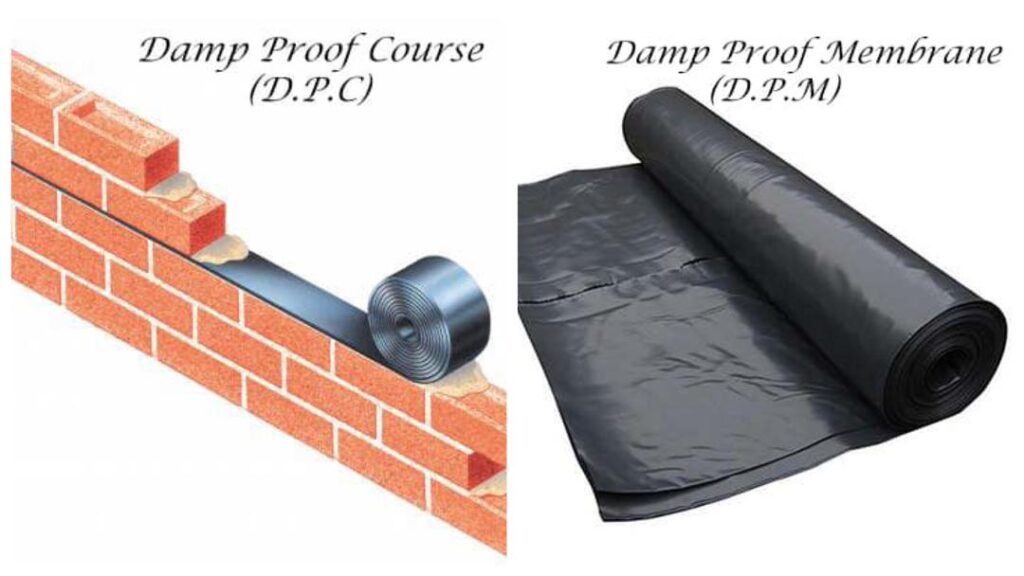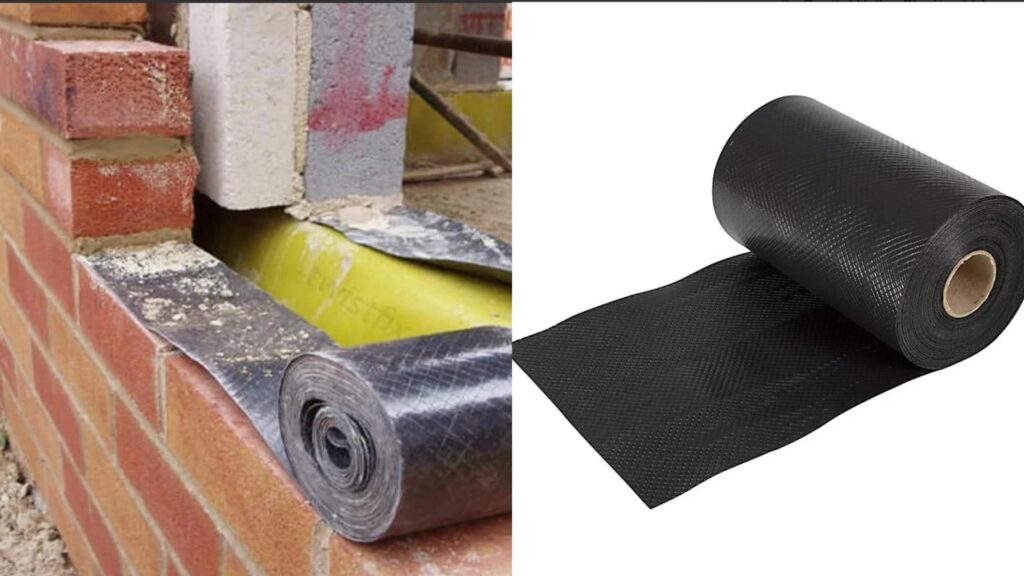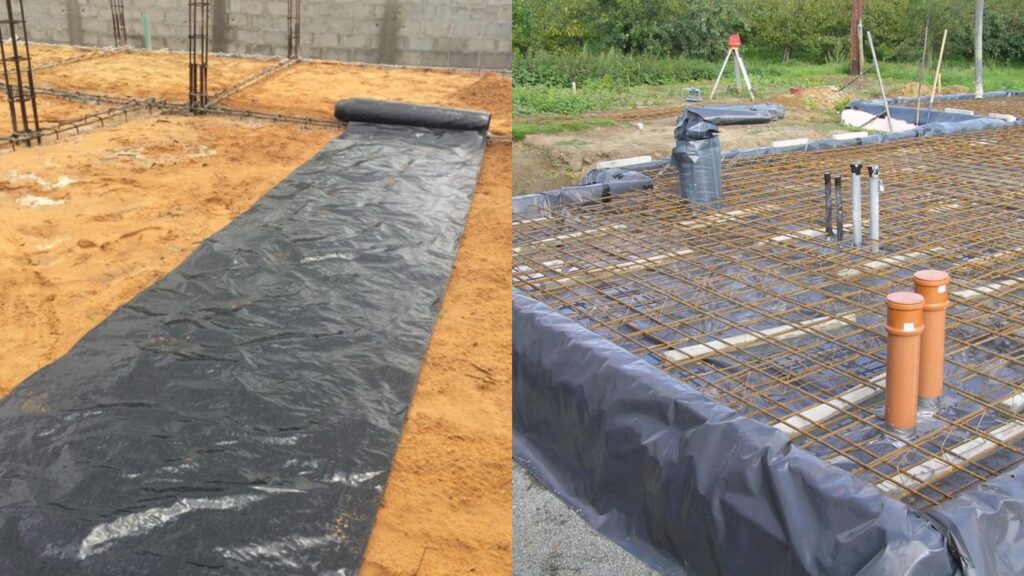
Dampness is a persistent issue in many Ghanaian homes, causing discomfort, health problems, and structural damage. To combat this, understanding the difference between a Damp Proof Course (DPC) and a Damp Proof Membrane (DPM) is crucial.
What is a Damp Proof Course (DPC)?
A DPC is a horizontal barrier installed in walls to prevent moisture from rising from the ground. It’s typically placed at ground level or just above, acting as a shield against rising dampness. The material used for DPC depends on factors like climate, building type, and the specific conditions of the site. Common DPC materials include bitumen, slate, and engineering bricks.

Key points about DPC:
- Prevents rising damp
- Installed horizontally in walls
- Material varies based on conditions
What is a Damp Proof Membrane (DPM)?
A DPM is a flexible sheet material used to prevent moisture transmission. It’s commonly laid under concrete slabs/ Oversight Concrete to stop moisture from rising. DPMs also protect building structures from dampness. Polyethylene sheeting is a widely used DPM material.

Key points about DPM:
- Prevents moisture transmission
- Commonly used under concrete slabs or oversight concrete
- Available in various lengths and gauges
Why are DPC and DPM Essential?
Both DPC and DPM are crucial for creating a dry and healthy living environment. Neglecting these elements can lead to:
- Structural damage: Dampness can weaken walls, floors, and foundations, leading to costly repairs.
- Health issues: Mold and mildew thrive in damp conditions, causing respiratory problems, allergies, and other health issues.
- Discomfort: Dampness creates a cold, unpleasant atmosphere, reducing your overall comfort.
Choosing the Right Materials and Installation
Selecting high-quality DPC and DPM materials is essential for effective protection against dampness. We at Dwell Chronicles recommend purchasing from reputable suppliers to avoid future problems. Remember, investing in quality materials upfront can save you money on costly repairs later.
Proper installation is equally important. Consulting with a qualified building engineer will ensure that the DPC and DPM are installed correctly to provide maximum protection for your home.
Signs of Dampness
Recognizing the signs of dampness early on is crucial. Common indicators include:
- Visible mold or mildew growth
- Damp patches on walls or ceilings
- Peeling paint or wallpaper
- Condensation on windows
- Musty smell
If you notice any of these signs, it’s essential to investigate the cause and take appropriate action to prevent further damage.
By understanding the difference between DPC and DPM, choosing the right materials, and ensuring proper installation, you can create a dry and healthy living environment for your family.
Dwell Chronicles is here to provide expert advice and guidance on all aspects of home maintenance and improvement. Contact us today to learn more about protecting your home from damp.
Contact Dwell Chronicles to Learn More or Experts Hiring:
Call +233(0)547293193
WhatsApp +233204700023


Comments
Thank for reading. Cheers!